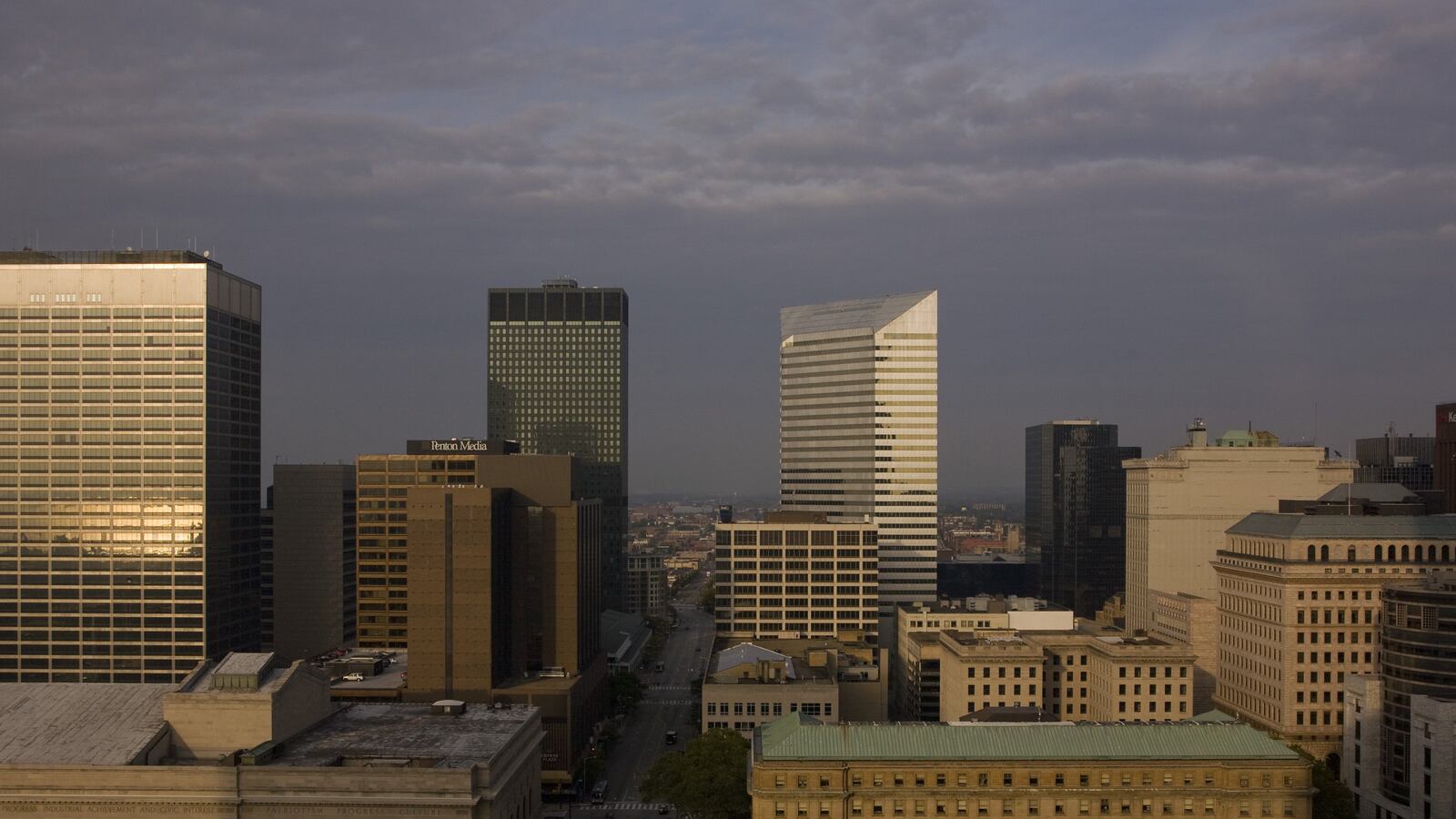Granted, no one is going to mistake Cleveland for the garden spot of mid-America, but this most recent rash of bad headlines, sparked by the discovery of three women’s bodies, are causing some to call the city the serial-killer capital of the world … and it’s a bum rap.

In point of fact, the bodies were actually discovered in the adjacent suburb of East Cleveland, which I suppose is close enough for national media pundits. If, as some numerologists posit, bad things happen in threes, perhaps the city’s amazing run of bad luck in terms of a presumed failure to protect the welfare of women has finally run its course.
And now 35-year-old Michael Madison (who bears a sickening resemblance to Anthony Sowell, the "Cleveland Strangler," whom he reportedly has said he admired) drags a city that’s seen more than its share of hard times down once again. But, like the 1990s T-shirt popularized by fans of the much-loved Browns football team states: “Cleveland—You gotta be tough."
From a peak population of 914,808 in 1949, Cleveland has shrunk to a city of 396,815 in the 2010 Census, and the decline has been marked by bumps and bruises—albeit some of them self-inflicted. And fire played an integral part in the city’s demise.
Located in the geographical center of the Rust Belt, as America’s heavy manufacturing and steel making industries declined, so too did Cleveland. Once home to dozens of Fortune 500 companies, over a period of a few decades most of them decamped almost as fast as LeBron James did when he broke the hearts of fanatical local sports buffs back in 2010 by “taking his talents to Miami.”
But back to the fires.
In 1962, marine biologist and conservationist Rachel Carson’s blockbuster book Silent Spring jumpstarted the global environmental movement, which eventually led to the establishment of the Environmental Protection Agency. The bestseller detailed how chemical companies—which pushed back hard against the book—were polluting our air and water.
So, when the Cuyahoga River, which divides Cleveland into east and west side neighborhoods, caught fire in 1969, the incident eventually made worldwide news … in spite of the fact it wasn’t the first time fire had erupted on the oil and chemical-slicked waterway.
A month after the fire, a picture of a ship being engulfed in flames on the river appeared in Time, but the image actually was one of a much more serious fire that had occurred in November of 1952 (and it’s been alleged the editors knew this). Actually, no known images of the ‘69 fire are known to exist. Nonetheless the incident put Cleveland in a terrible national spotlight.
Then, in 1972, fire struck again when Mayor Ralph Perk set his hair ablaze with a welder’s torch he was attempting to use at a ribbon-cutting ceremony for a convention. Soon Johnny Carson was having more fun with Cleveland and its mayor than a monkey with a peanut.
By then national publications had begun ranking cities on a number of livability factors, and Cleveland always came out at or near the bottom (or top, according to how the rankings were structured): crime, education, employment, poverty … you name it and Cleveland was there sticking out like a sore thumb, often at No. 1. I heard one comic say that ours was the ugliest city in the country, and he wasn’t talking about the buildings and infrastructure—he was talking about the people. He said that everyone in Cleveland had a bad case of acne.
Home-grown comic Drew Carey did a routine in which he said the Cleveland Indians were so bad they shouldn’t even bother pitching to batters, but instead should ask them if they wanted a single, double or triple, and then just have the pitcher throw the ball into the outfield.
The city limped along until the dynamic (and some say dictatorial) Mike White became mayor and began micromanaging to the degree that allegedly he would call the head of the service department at midnight to yell at him that he saw a street light out. Nonetheless, under “Mighty Mike” it wasn’t long before Cleveland again won the designation of an All-American City.
After abruptly retiring (some say just ahead of a scandal that saw his best friend do the perp walk and begin stepping off an 18-year bid in federal prison), White’s successor was Cleveland’s first female mayor, Jane Campbell.
A neighborhood planner by profession (and the daughter of a pastor who was an intimate of Martin Luther King Jr.) Campbell was well meaning, but was cursed with somewhat of a tin ear politically. When, as the keynote speaker at an annual NAACP fundraising dinner, she took to the podium and quipped to the assemblage her surprise and pleasure that the event started on time, every black jaw in the room (including mine) dropped to the floor. You simply can’t make this shit up.
She was ousted by Frank Jackson, a former city prosecutor who had won a seat on City Council from the poorest ward in the city. He rose to the presidency of that body, and now, as he finishes up his second four-year term as mayor (he’s up for reelection in the fall and is a cinch to win again) the seeds that were planted under Mike White are bearing fruit.
Known as a quiet, usually soft-spoken politician, his grasp of every aspect of City Hall demonstrates that he’s the consummate policy wonk. Often the lights in his second-floor City Hall office can be seen burning well past 10 p.m.
He’s finally brought peace and a sense of order to the once-troubled Cleveland school system (under Ohio law, he gets to run the schools) and brought aboard a bright and dedicated CEO in the person of Eric Gordon. Working hand in glove with Teachers' Union president David Quolke, who, by all appearances, is equally as bright, the schools are set for a real turnaround.
With a newly built Medical Mart (built at the encouragement of Dr. Delos Cosgrove, the head of Cleveland Clinic, the city’s largest employer) which has spurred the renovation of one major nearby hotel, the sale of the equally nearby Board of Education building to a group that will turn it into another hotel, and a plan for the city and county to build yet another hotel being bandied about, downtown Cleveland is thriving. As of this writing the Senior Games (which attracted 10,000 folks from all over the country) are in town, and the waiting list for downtown apartments and condos grows everyday as empty nesters continue to flock in from exurbia.
Nonetheless, in media speak, “if it bleeds it leads.” The incident last year where two unarmed individuals were pursued by over 100 officers for close to a half hour, and ended with 137 shots being fired into the vehicle they were riding in, and the three aforementioned incidents which create the perception that women are not safe in Cleveland, are unfairly defining the city as it makes tremendous strides to avoid becoming the next Detroit.
Statistically, Cleveland is not due for another major incident in which women are harmed for another hundred years; our luck has simply got to change.






